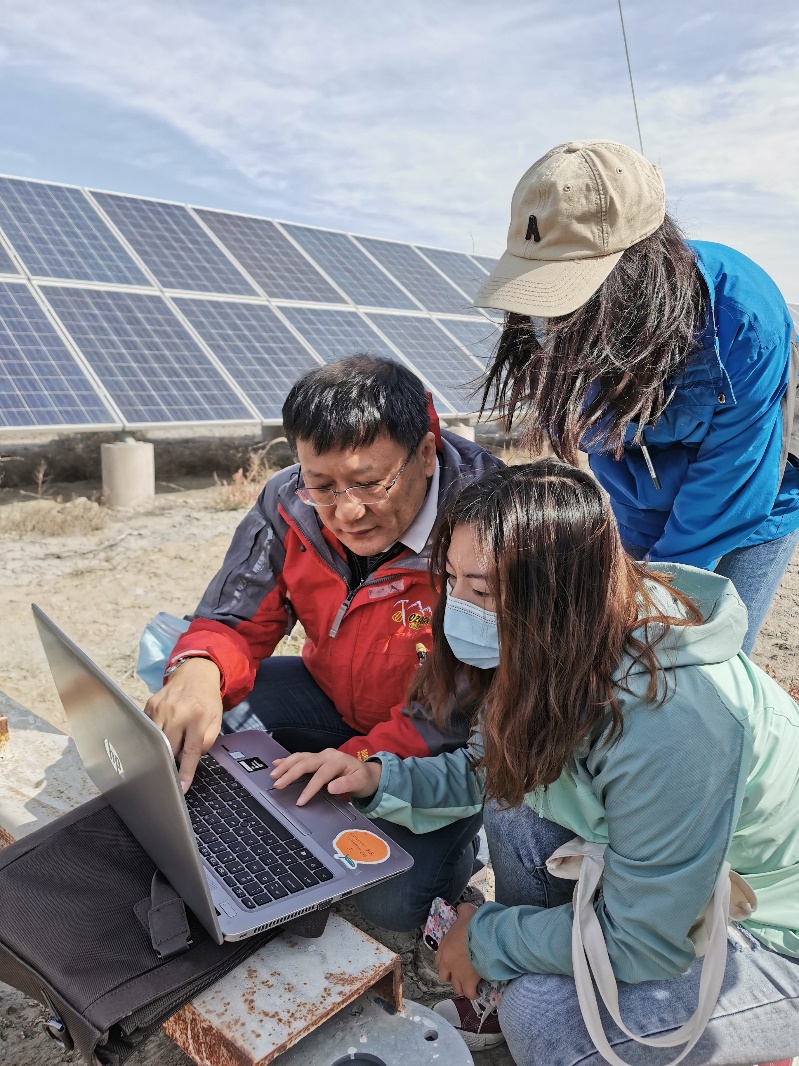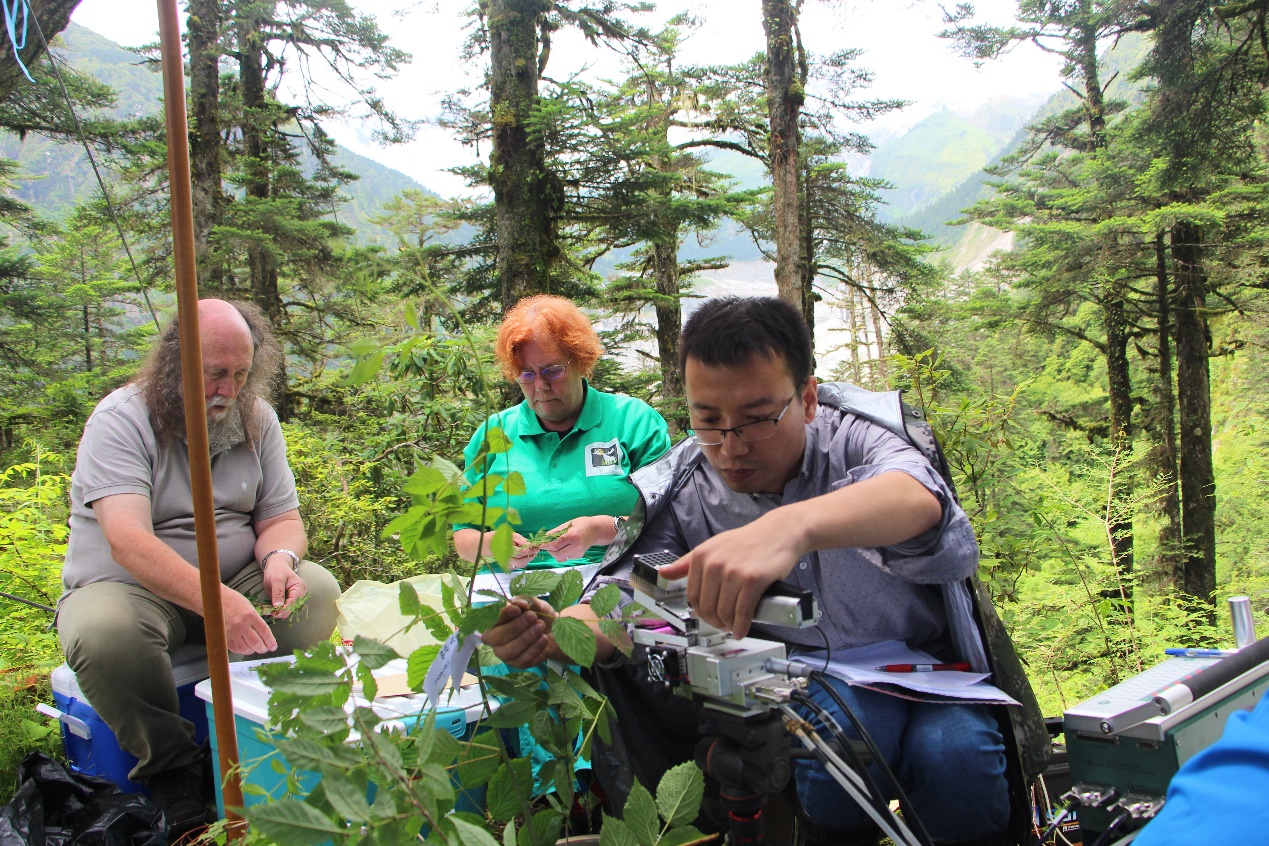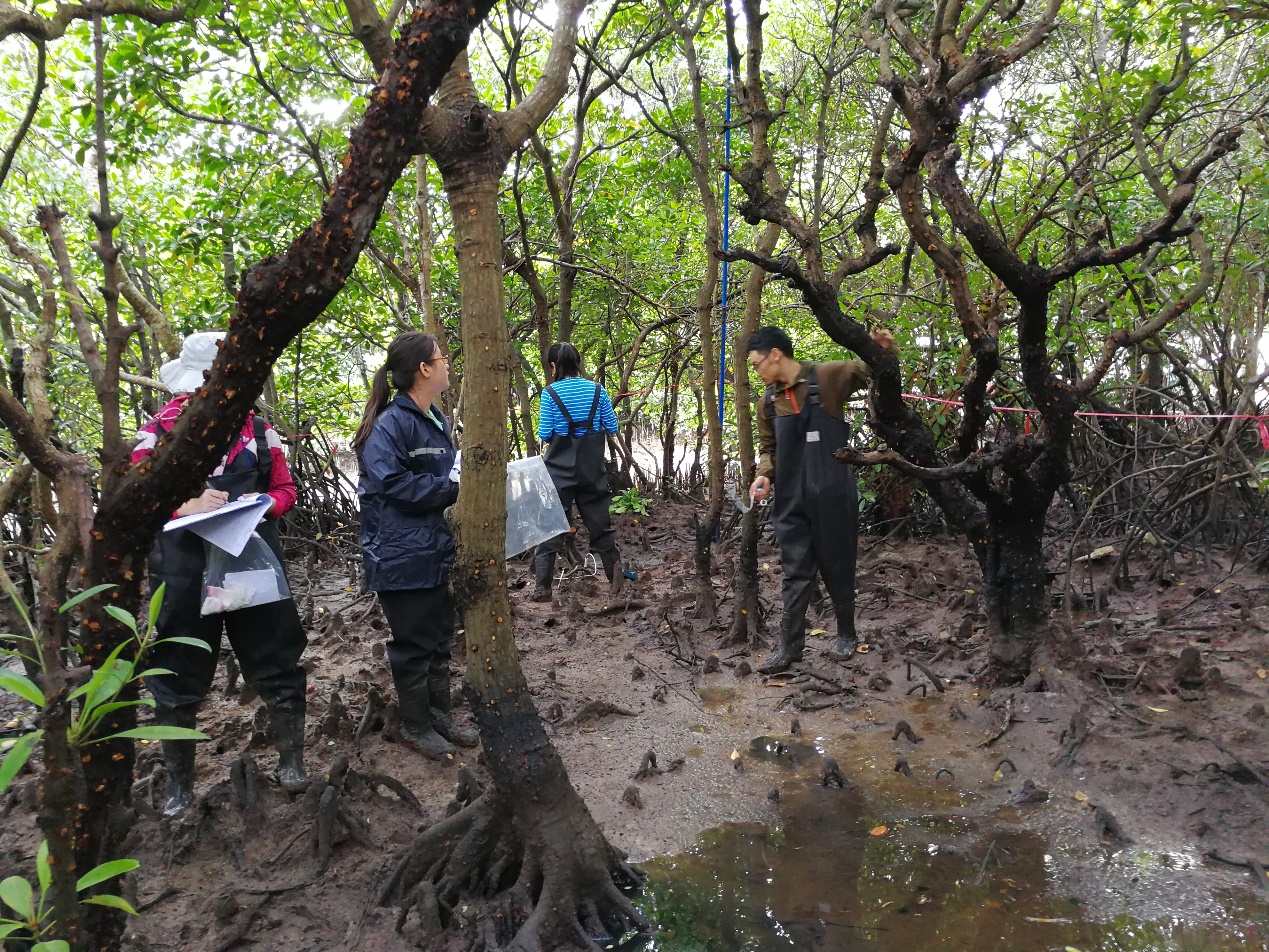In September 2020, President XI Jinping proposed at the general debate of the 75th United Nations General Assembly that China will increase its national intensity of autonomous contributions, adopt more powerful policies and measures, strive to reach peak carbon dioxide emissions by 2030 and achieve carbon neutrality by 2060. Countries should establish new development concept of innovation, coordination, greenness, openness, and sharing, grasp the historic opportunities of the new round of technological revolution and industrial transformation, promote the "green recovery" of the world economy after the epidemic, and bring together a strong force for sustainable development.
To achieve the "peak carbon dioxide emissions" and "carbon neutrality" goals, China will inevitably change its development pattern and carry out an energy revolution. In this procedure, what responsibilities should universities undertake? What role should it play?
A science and technology conference battle
China not only takes the lead in setting a timetable for "peak carbon dioxide emissions and carbon neutrality", but also promotes the green development strategy with great boldness. This is destined to be an unprecedented technological "conference battle".
At present, global climate change has led to frequent extreme weather events, and excessive carbon emissions during human production and consumption are the most important cause of climate change. As far back as 2014, XI Jinping had proposed a new energy security strategy of "Four Revolutions and One Cooperation". In 2020, he clearly pointed out that China should achieve "peak carbon dioxide emissions" by 2030 and achieve "carbon neutrality" by 2060 (abbreviated as "30·60" goal in this article).
"'30·60' goal points out the direction for our country's energy clean and low-carbon transition, puts forward requirements for quantitative indicators, draws a blueprint for our country's economic and social development and plans specific routes. For the construction of a beautiful earth and human sustainability, Chinese plan have put forward, fully demonstrating China's firm determination to respond to climate change and its responsibility to build a community of common destiny for all mankind," said YANG Yongping, President of North China Electric Power University.
According to LUO Yong, Dean of Department of Earth System Science of Tsinghua University and Deputy Dean of School of Science, energy transition and solution to climate change are both major issues related to human survival and development.

At the end of 2017, Department of Earth System Science of Tsinghua University built a large photovoltaic power station climate environmental ecological effect research observation platform in Wujiaqu City of Xinjiang Production and Construction Corps, and established a social practice base for graduate students of Tsinghua University based on this. The picture shows Professor LUO Yong (the first one from left) debugging the data acquisition system at the observatory in September, 2020. (Shot by HOU Xuhong)
"Human live on the same earth and share weal and woe. Putting forward '30·60' goal is our concrete action as a responsible large country, taking international responsibilities on our initiatives and building community of common destiny for all mankind," said LUO Yong. On the other hand, the serious environmental problems brought about by economic development have brought our country to a stage where it will be unsustainable if actions are not taken to solve them. “Actively responding to climate change and deep decarbonization are our country’s internal requirements for achieving our own sustainable development and an important way to promote the construction of ecological civilization. This goal can be used to force our economic transformation and promote the realization of high-quality development. In addition, under the general trend of global low-carbon development and transformation, whoever has the ability to develop low-carbon, and whoever masters advanced low-carbon technology, will owns international competitiveness, influence and leadership. "
Currently, as the world's largest energy producer and consumer, China consumes about 1/2 of global coal consumption, carbon dioxide emissions account for 1/3 of global carbon dioxide emissions, and yet our country's energy demand is still ceaselessly increasing, and carbon emissions are still on the rise, and have not yet reached their peak. By 2030, the total energy consumption will increase by about 15% compared with the end of 2020. According to the plan, it will only take about 30 years from "peak carbon dioxide emissions" to "carbon neutrality".
"As the world's second largest economy, China's ‘peak carbon dioxide emissions’ and ‘carbon neutrality’ goals have been shortened by several decades compared with many developed countries. This is a huge challenge for our country," YANG Yongping analyzed. The realization of"30·60" goal is a systematic project involving all aspects of technology, economy, and social development. Time is tight, tasks are heavy and decree of difficulty is huge. It is not easy to complete, but a big battle, a tough battle, and a hard battle.
How to do well in this battle? YANG Yongping believes that it is necessary to have systematic thinking, and efforts should be made to prioritize energy conservation, construct an integrated energy system, promote energy transformation centered on electrical power, and ensure institutional mechanisms.
"Energy conservation and efficiency enhancement are recognized internationally as the ‘first energy’ which is the cleanest and most economic.' We must adhere to the policy of giving priority to energy conservation," said YANG Yongping. We must strictly implement the "dual control" system of total energy consumption and intensity, strive to improve energy utility efficiency, reduce energy consumption, and force economy to transform and upgrade. We should persist in building an integrated energy system, achieving cleaning fossil energy, scaling clean energy, and integrating multiple energy sources, and promoting a clean and low-carbon energy supply structure. At the same time, we must persevere in promoting the energy transition centered on electrical energy. Gradually improve the level of electrification, and actively promote new energy consumption modes such as replacing coal with electricity, replacing oil with electricity, and replacing gas with electricity and promote green and low-carbon development. In addition, it is necessary to vigorously carry out research and innovation of technology and equipment, promoting the transformation of scientific and technological achievements through standardization, and speeding up the construction of an Internet integrated intelligent energy system.
The role of Universities cannot be absent
Colleges and universities should play a leading role in basic theories, key technologies, engineering applications and other systematic and transformative research, innovative talent training, and advocacy of simple, moderate, green, low-carbon, civilized and healthy lifestyles.
At present, in terms of domestic carbon emissions, electrical power industry (mainly thermal power) accounts for 41%, transportation industry (mainly oil products) accounts for 28%, and construction and industry account for approximately 31%.
To achieve the goal of "peak carbon dioxide emissions", it is estimated that by 2030, our country’s carbon dioxide emissions per unit of GDP will be reduced by more than 65% compared with 2005, non-fossil energy will account for about 25% of disposable energy consumption, and the total installed capacity of wind power and solar power dynamo will reach over 1.2 billion kilowatts. Data in 2019 shows that our country's non-fossil energy accounts for 15.3% of disposable energy consumption, and the total installed capacity of wind power and solar power dynamo is 415 million kilowatts, which has a big gap between the 2030 goal.
"To achieve the '30·60' goal, energy must be low-carbon, green and clean. How to achieve low-carbon? All these years, our main measures has been to vigorously develop wind, solar, hydro, nuclear and other renewable energy and new energy sources. This is an energy revolution," LIU Jizhen, an academician of the Chinese Academy of Engineering and a Professor at North China Electric Power University, said that energy transition cannot be accomplished at one kick. The energy revolution must be carried out around the consumption side, the production side, scientific and technological research, and institution and mechanism innovation.
In this regard, North China Electric Power University established the "State Key Laboratory of Alternate Electrical Power System with Renewable Energy Source (NCEPU)" in 2011, with LIU Jizhen as the Director. The laboratory will take increasing the proportion of wind energy, solar energy and other renewable energy in electrical power, and solving large-scale renewable energy consumption as its main direction.
LIU Jizhen introduced that at present, our country has become the world's largest wind power generation country and photovoltaic power generation country. The installed capacity at the end of "the 13th Five-Year Plan" has exceeded 530 million kilowatts. However, in the overall power system, the contribution rate of wind power and photovoltaics is only 9.6%, which is far from becoming the dominant energy source.
"Achieving this goal requires us to maintain an annual growth rate of more than 5% and 10% in China's non-fossil energy consumption and renewable energy power generator installation capacity during 'the 14th Five-Year Plan' period and beyond. The scale of renewable energy growth needs to enter the stage of "double-speed development,” said LIU Jizhen. At the same time, it is necessary to explore subversive new energy sourceswith broad development prospects, such as hydrogen energy, nuclear energy, etc., to realize large-scale energy storage, "These all put forward higher and more urgent requirements for scientific research."
In LUO Yong's view, to solve the cutting-edge scientific problems related to the realization of the "30·60" goal, universities should play a main role.
In 2009, Tsinghua University established a new interdisciplinary subject—Earth System Science, and separately established the Earth System Science Research Center and the Global Change Research Institute, taking energy transition and climate change response as an important research direction. In 2016, Department of Earth System Science was established on this basis.

In December, 2015, SI Yali, former Associate Professor of the Department of Earth System Science of Tsinghua University was putting a neck-ring tracker on Bean Goose in Poyang Lake, Jiangxi, to carry out migratory waterfowl satellite tracking work. (Shot by ZHANG Tao)
"Since 2015, Tsinghua University has jointly completed the 'Lancet Countdown Report' with more than 120 experts from more than 30 top academic institutions around the world, and publishes a report every year to comprehensively analyze global climate change trends," said LUO Yong. Not long ago,the 2020 Report of the Lancet Countdownwas released to sort out global response to climate change. For example, in 2019, renewable energy provided 11.5 million occupations, an increase of 4.5% over 2018. In terms of low-carbon power generation, low-carbon energy power generation continues to rise, with an increase of 10% in 2017 over 2015. Among them, China is the main contributor.
At the same time,the China Report of the Lancet Countdown (2020)released at the same time points out that, in 2019, under the joint actions of Chinese government and the whole society, China’s carbon dioxide emissions per unit of GDP dropped by 48% compared with 2005, which is an over-fulfillment of the goal originally set to be achieved in 2020. Investment in new coal power plants has been on a downward trend since 2015. At the same time, investment in low-carbon electrical power has increased significantly, and its investment scale is 9 times that of coal power. Among them, the scale of investment in renewable energy in 2019 reached 86.4 billion U.S. dollars.
"These all reflect our country's determination and efforts to achieve '30·60' goal," said LUO Yong. In terms of basic research, universities should play a scientific supporting role for the international community and governments of various countries in the decision-making of climate change and international climate governance.
YANG Yongping said that to achieve "Peak carbon dioxide emissions and carbon neutrality", the role of universities is indispensable. In addition to intensifying scientific and technological innovation, conducting systematic and transformative research on basic theories, key technologies, and engineering applications, and attaching importance to the cultivation of innovative talents, colleges and universities should also advocate simple, moderate, green, low-carbon, civilized and healthy lifestyles to teachers, students and the public in order to help cultivate green, healthy, low-carbon and safe consumption habits.
People, money, wisdom, are focusing on the direction of transformation
The high-end "green technology" achievements independently developed by universities will provide strong scientific and technological support for country's energy security and green and low-carbon development.

In July, 2018, YANG Yanzheng, postdoctoral researcher of Department of Earth System Science, Tsinghua University (the third from left), eminent visiting Professor Sandy Harrison (the second from left) and Professor Colin Prentice (the first from left), was measuring plant photosynthesis and plant soft traits at sampling points in the field on the east slope of Gongga Mountain. (Shot by WANG Runxi)
In the industrial field, focus on promoting wind power generation and solar photovoltaics generation, and form a characteristic industrial system with new energy power as the main line; in the field of energy conservation of construction, construct photovoltaic buildings, use glass windows and facade to generate electricity to achieve low-carbon cities; in new energy application, encourage small-emission cars, central heating, geothermal heating, etc...
In Baoding City, Hebei Province, as early as the beginning of 2007, the local government put forward the concept of "Solar City", planning to apply renewable energy based on solar energy on a large scale throughout the city. For more than ten years, North China Electric Power University and Baoding City have cooperated for a win-win situation in terms of technological innovation, achievement transformation, industry cultivation, talent training, and the development of "China Electricity Valley", embarking on a road of school-local cooperation with distinctive characteristics.
Facing "30·60" goal, not long ago, North China Electric Power University and Baoding City jointly hosted "30·60" New Era Energy and Electrical Power Innovation and Development Conference, and released30·60" New Era Energy and Power Innovation and Development Baoding Declaration. In the declaration, Baoding promised that by 2025, the city's carbon dioxide emissions per unit of GDP will be reduced by about 65% compared to 2005, non-fossil energy will account for 25% of disposable energy consumption, and the total installation capacity of wind and solar power generator will increase significantly.
In addition, focusing on the strategic goal of national energy development from low-carbon to zero-carbon, North China Electric Power University has highlighted the leading role of high-level talents in talent training and technological innovation, and has introduced a series of reform policies and measures, continuously deepen the reformation of the personnel system with evaluation reformation as the core, and encourage teachers to actively participate in scientific research and technological innovation in the fields of energy transformation, new energy development, and smart grids in teaching and scientific research.
"We have laid out integrated research projects, aimed at major national projects and emerging directions, realizing projects and rewards entire chain of organization and cultivation mechanism, especially the school should focus on the frontier of energy and power technology and the problem of "neck stucking". Focus on the key technologies, core components, and major equipment that are highly dependent on foreign countries and are constrained. Continue to promote the construction of large scientific devices for the efficient conversion and utilization of solar energy, strengthen the leading role in the construction of the national key laboratory of new energy power system, and enhance the ability to gather outstanding talents and produce high-level results,” Introduced YANG Yongping. Several generations of Chinese electric people represented by Academician YANG Qixun and Academician LIU Jizhen have overcame multiple technical problems in the development of our country's electrical power industry and created several "primary", "firsts" and "foundation laying" in the history of China's electric power construction. In the new era, a large number of high-end “green technology” achievements represented by school teachers, including microcomputer relay protection, thermal power plant simulation, optimized control of thermal power units, and efficient use of clean energy, provide strong scientific and technological support for national energy security and green and low-carbon development.
Aiming at the national strategic needs and the frontiers of world science and technology, in 2017, Tsinghua University's Low-Carbon Energy Laboratory, School of Environment, and Department of Earth System Science jointly established the Institute of Climate Change and Sustainable Development, gathering power of more than 10 disciplines and focusing on advanced nuclear energy, clean coal technology, new energy and renewable energy technology, energy development strategies and policies, solution to climate change and environmental coordinated governance to tackle problems jointly.
Responsibility of “green” is not limited to scientific researches
We must not only do upstream scientific cognition and study cutting-edge scientific issues, but also do midstream technological innovation, solve the real "neck stucking" problem, and promote the application of results, also do downstream scientific propagation to accumulate social consensus.
In LUO Yong's view, solution to climate change and energy transition is a very complex issue that requires universities to combine basic research, talent training, decision-making consultation, scientific communication and even campus actions.
"We must not only do upstream scientific cognition and study cutting-edge scientific issues, but also do midstream technological innovation, solve the real "neck stucking" problem, and promote the application of results, also do downstream scientific propagation to accumulate social consensus," said LUO Yong. To achieve "30·60" goal is a systematic project that requires the participation of the whole society.
In this regard, LUO Yong suggested that works of the following aspects should be done on the height of the mission of universities in the new era. The first is to cultivate global-oriented scientific research, technology, and service professionals and compound talents with an international perspective. LUO Yong said that from a global perspective, the current talent training for climate change response and energy transition is scattered in various disciplines and should be integrated. "The next half of the century is a critical period for responding to climate change, and the demand for talents will inevitably be more vigorous. Colleges and universities are incumbent on this."

In November, 2017, graduate students from Department of Earth System Science of Tsinghua University conducted a field inspection of mangrove biodiversity in Wenchang, Hainan. (Shot by LIN Guanghui)
"In addition, the school should further play the role of a multi-disciplinary cross-innovation platform, enhancing the scientific research ability of tackling problem to solve the problem of ‘neck stucking’ in climate change and energy transition, and combine scientific cognition, technological innovation and policy support, so that the research results can be landed in specific practice,” added LUO Yong. The value of climate change science communication should also be emphasized, and the awareness of climate change among college teachers, students and all walks of life should also be enhanced.
"In 2019, Tsinghua University initiated and promoted the establishment of the 'Global Alliance of Universities on Climate (GAUC)' consisting of 12 universities in 9 countries. This is an innovative act of the world's university cooperation to build a global ecological civilization, to build a community with a shared future for mankind, and to lead the global cooperation on climate change. It builds a new global cooperation platform to give full play to the university’s advantages in knowledge, idea, culture, science and technology," introduced LUO Yong. So far, GAUC has held two academic forums for graduate students, and has also opened a global summer school course “climate change lecture hall" with the theme of "climate governance in a post-epidemic world".
To serve economic and social development and implement ‘30·60’ goal, universities should give full play to their advantages in talent training, discipline construction, and basic research to make new and greater contributions to the development of green energy transformation,” said YANG Yongping. In terms of talent support, we should comprehensively strengthen the training of new energy talents, promote the deep participation of industry enterprises and social forces in the whole process of talent training, accelerate the formation of a diversified and collaborative education pattern, and more accurately train urgently needed talents in energy field and high-end innovative talents.
In terms of discipline construction, YANG Yongping believes that it is necessary to strengthen and optimize the low-carbon discipline system, stand at the height of serving ecological civilization and construction of a beautiful China, further condense discipline direction, optimize discipline layout, and form a first-class discipline ecosystem of low-carbon advantage discipline and emerging and supporting disciplines with mutual promotion, integration and support.
In addition, he believes that it is necessary to give full play to the advantages of being original innovation source, facing the national strategic needs, accelerating the construction of industrial innovation and technological innovation source center, striving to achieve new breakthroughs in key areas and key technologies, solving the core technology of our country's “neck stucking” problem of energy development, and promoting innovative development in the fields of photovoltaics, wind power, new form of energy storage, high efficiency energy saving, intelligent power transmission and transformation, electrical power automation, and electronic information.
"The energy revolution will eventually move towards applications to solve practical problems. Therefore, it is necessary to build a coordinated development pattern," YANG Yongping suggested to deepen the development mechanism of integration of government, industry, university, research and utility, promote in-depth cooperation between schools and local enterprises in areas such as innovation driving, intelligence tank construction, and talent gathering, and jointly actively respond to new challenges in world energy security, new changes in energy demand, new situations of green transformation, and new requirements for innovation and development.
Text: DONG Luwanlong
Source: China Education Daily